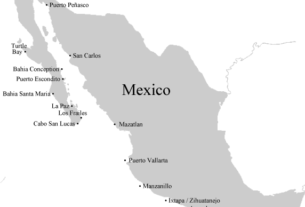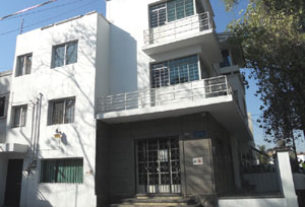(Originally published in somewhat different form in The Mexico City News, November, 1982)
Eli was sick a lot in Oaxaca. The air of the city of Oaxaca in those days was fecalized. Many people there still don’t have toilets. They use their yards or vacant lots or — in really rural locations such as Zipolete in Puerto Angel down on the coast — open areas reserved for use as latrines. You find a relatively unused spot and squat down. The feces quickly decompose in the moist tropical lowlands; in the arid highlands, they dry and become airborne dust. You didn’t have to eat contaminated food to get diarrhea. All you had to do was breathe. In the first month we were there, we were all sick repeatedly. We learned the names of all the different infections. Shigella was the worst — simultaneous violent diarrhea and explosive vomiting. Once Anita and I developed immunity, however, we no longer got sick.
Eli, on the other hand, had chronic diarrhea much of the time in Oaxaca. We couldn’t afford to take him to a specialist, so we finally just went to the general hospital where the poorest people go (not the Social Security hospital, which is for employed workers on the health insurance plan, a big cut above). We waited about four hours and saw a young woman doctor, who examined him carefully, made us tell her our whole situation, listening very patiently to our terrible broken Spanish. She explained that he wasn’t getting enough solid food, that he was too big to rely on breast milk, mashed bananas and bacon (his favorite food). We didn’t know this because we were so simple. We didn’t even have a copy of Dr. Spock (we got that later), much less some Whole Earth breast feeding manual. Then she called her husband, a doctor in another government hospital, and had him explain it all to us again in English, to make sure we understood.
After that, he was much better, but he was always susceptible to colds and the like. One morning, Anita and I were having one of our usual intense talks with Glenna Hunter, a friend from Mendocino, California, who was married to a local hotel owner. Anita had a severe cold. Eli had not been feeling well for a couple of days, with an off-and-on-fever. He suddenly went into a strange, staring swoon. With his eyes wide open seeing something that did not include me or Anita or Glenna or the room we were in, he began to twitch in slow, horrifying convulsions.
You spend most of your life thinking that you are immortal, invulnerable, that nothing touches you, and tragedies are all neatly synopsized in newspaper headlines and grainy photographs of weeping survivors. Then time stops and you are back to reality. For the next few days everything made a kind of special sense that does not travel well through words. It was not pretty but it was beautiful in the way that everything is beautiful where the knife of reality slices the living from the dead.
The people of Oaxaca call the hospital and clinic of the Mexican Social Security Institute “El Seguro.” A modern complex located at the intersection of Avenida Juárez, Calzada. Porfirio Díaz and the Pan American Highway, it’s a bit down the street from the Hotel Misión de los Angeles. When I carried Eli into El Seguro he was no longer twitching. His lips were blue and he had stopped breathing. He was in the crisis center for twenty-four hours, during which all they could tell us was to wait. I remember the way they ran forward to take him from my arms as we came into the lobby. They didn’t ask for our names or his or our identification or credit cards or anything at all. Later, a social worker came out and got our data. We were illegal immigrants, but she didn’t even ask for our tourist cards.
For the next twenty-four hours, we waited, while he lay unconscious in the crisis center with tubes in his nose, wired up to an encephalogram machine, a respirator chugging. We tearfully begged doctors and nurses for information. They told us to continue waiting, that he was still alive. Out in the parking lot, we finally just completely lost it. Time collapsed. I see us on our knees with our arms about each other praying and sobbing under the garish lights with Indian families camping on blankets waiting for their own dramas to resolve.
At dawn, he was breathing on his own and had moments of semi-consciousness and he was considered well enough to be transferred to an infants ward, where we were allowed to stay with him and spell each other sleeping on a cushioned bench by his crib. Every Mexican hospital room has places for relatives to sleep. You don’t just visit. You stay there with your loved one and keep watch. One of us was with Eli during his entire time in the hospital. In the rows of little cribs and isolettes stretching off in the dim light of the high-ceilinged room were children in every degree of sickness — premature babies with growths on their backs or huge ulcers or black faces, struggling to breathe, one armed boys, kids with the gray shrunken skulls of advanced dehydration from chronic diarrhea — hell’s special collection of the innocent damned.
By the side of each of these children was a relative. Some, like us, were fathers and mothers taking turns sleeping in chairs and on benches. Others — those of the terrible babies in the isolettes — may have been fathers or brothers or aunts or grandmothers. They were not mothers. That’s why those babies were there. They were orphans. We saw an Indian woman, who told us that she lived five hours by bus in the mountains, sitting by the crib of her semi-conscious infant grandson, whose mother had died in childbirth. The baby was drifting back toward her mother’s grave into a silent coma. The grandmother sat by the baby 24 hours a day, leaving only to eat twice a day. Her robes and headdress were like brightly colored mountain foliage rustling in the modern white grid of cribs and isolettes.
Life is not cheap in the jungle. Every little death has its own audience of grief. When your ordeal is over, they give you back your baby and you must sign a receipt: received the above-named child, living or dead, check one. There is a box for the living and a box for the dead and one box gets checked.
The baby in the isolette near Eli’s crib gave up trying to breathe on the third day. At about the same time, Eli’s temperature, which had reached as high as 106° F. went down to normal and stayed there. And so our baby came home jabbering and flirting and waving to the maids and busboys and waiters at the hotel who came out to greet him with those incredibly sweet Oaxacan kisses. “El Seguro,” they commented proudly. And we understood what they meant. The final diagnosis was tonsillitis and convulsive crisis. We looked up convulsions in Dr. Spock. Very common with high fevers and frightening to see, but most cases take care of themselves without further treatment.
Most.
We knew that an episode like this — 24 hours intensive care, five days hospitalization — would have cost thousands of dollars a day in the United States. There would have been embarrassing scenes about the bill, promissory notes to sign. When he was released, we had to see the director of the hospital to get the bill: $116 USD for five days care. We were pretty much penniless at the time and I explained in my halting Spanish that we couldn’t pay the bill. “Don’t worry about it,” the head doctor said. “You can pay us when you have the money.”


